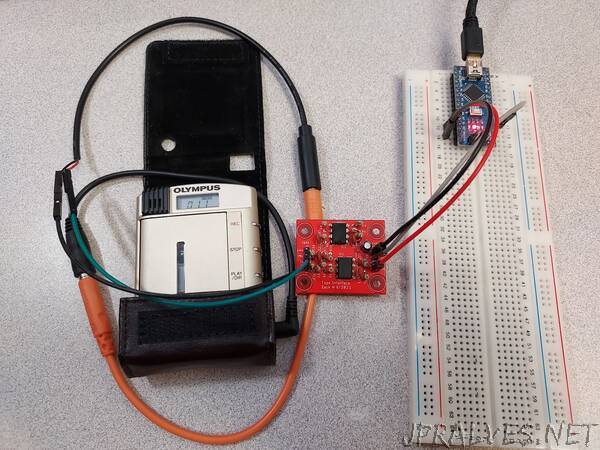
“I’ve been building a retro computer, and it’s gotten me interested in using cassettes as data storage. This poses an interesting challenge where binary information has to be converted into something that can be written to, and reliably read from, a cassette. We have to worry about immunity to noise (tape hiss), speed fluctuations (wow/flutter), and amplitude fluctuations (dropout).
Another limitation is frequency response. Our signal has to stay safely within the range of frequencies a tape can reproduce. This range can be as narrow as 400-4,000Hz for something like a microcassette. We could send a stream of bits at a safe 2kHz, but what if we then have a very long run of all zeros (or ones)? Our signal would dip below 400Hz, and our data would be lost.
One solution is to toggle our output at least once per bit. Two bits would give a full cycle and guarantee a minimum frequency of 1kHz. The presence of an additional toggle can represent a zero, and its absence a one. If every bit had an additional toggle, it would yield the maximum frequency of 2kHz. This is the basis of Differential Manchester encoding.
Besides it fitting nicely in a frequency range, Manchester has other advantages. Cassette recorders rarely concern themselves with the polarity of their signal (since it doesn’t affect the sound) and will sometimes invert their output relative to their input. Manchester encoding only uses the presence of these “toggles” or edges, and is unaffected by being inverted.
Also, each bit spends an equal amount of time high and low. This means we have no DC offset. If the offset were irregular, our signal would drift up and down, making decoding more difficult.
It’s fairly resilient in the face of speed warbles too, as we have an octave separating our ones and zeros. In other words, zero is always twice as fast as one. For comparison, one early modem standard used 1300Hz and 1700Hz for one and zero respectively.
So, Manchester encoding it is! This settles how we encode individual bits, but not how we structure our data. I chose to mimic the standard serial packet structure of “8n1”. This means a zero starting bit, 8 data bits, no parity bit, and a one stop bit. This makes it easy to figure out exactly how the data is aligned when receiving.”
